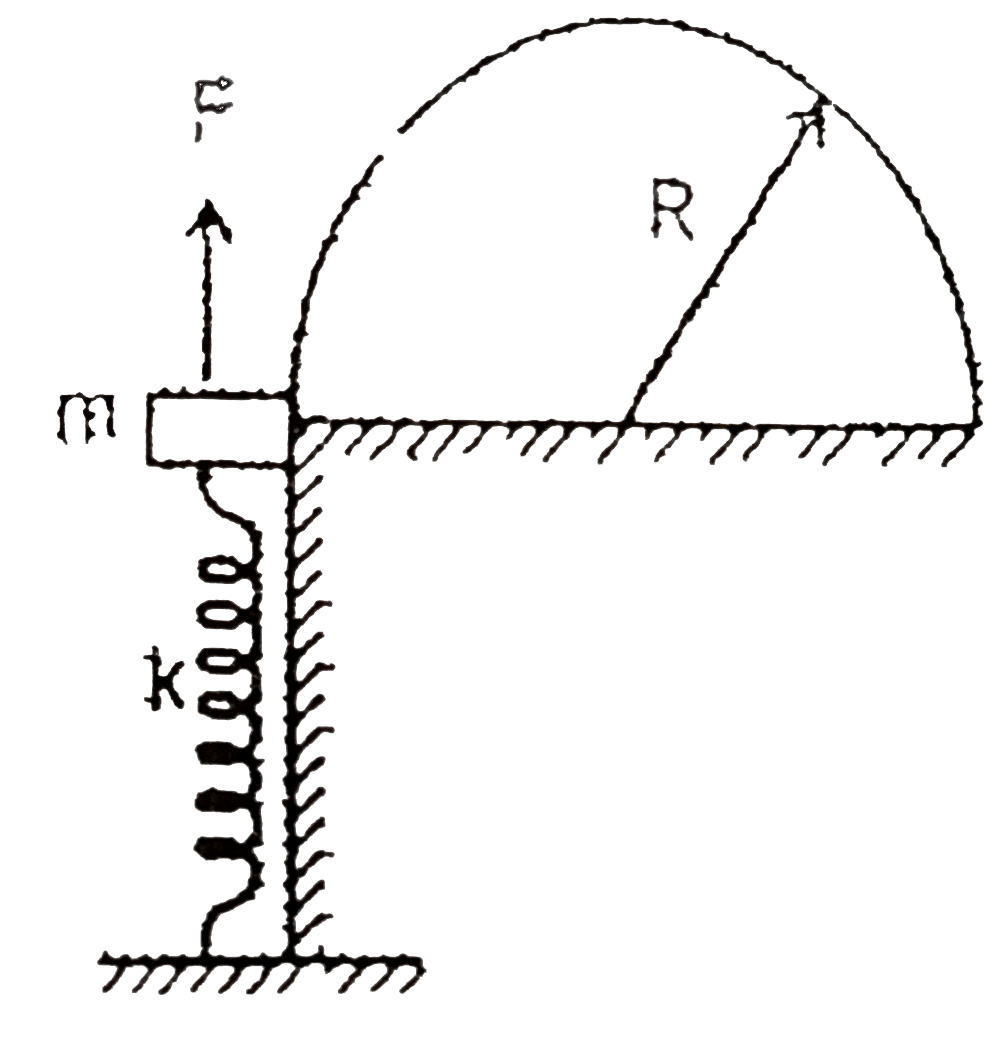Text Solution
Verified by Experts
|
Topper's Solved these Questions
SIMPLE HARMONIC MOTION
FIITJEE|Exercise Example|15 VideosView Playlist
Similar Questions
Explore conceptually related problems
Knowledge Check
Similar Questions
Explore conceptually related problems
FIITJEE-WORK, ENERGY & POWER-Example
- In the figure shown a semi-cylinder of radius, R is rigidly fixed on a...
04:29
|
Playing Now - A spring mass system is held at rest with the spring relaxed at a heig...
05:18
|
Play - The arrangement shown in the diagram is moving in space with an accele...
05:34
|
Play - The system of mass A and B shown in the figure is released from rest w...
Text Solution
|
Play - A wedge with a rough circular track AB, is fixed on the plane x x'. Th...
04:26
|
Play - Two bodies A and B of each of mass 100 gm are allowed to move along a ...
03:29
|
Play - A particle is moving on a circle of radius R such that at every instan...
06:12
|
Play - A force given by the relation F=8t, acts on a body of mass 2 kg, initi...
01:40
|
Play - A particle of mass m is moving horizontally with a constant velocity v...
02:10
|
Play - A body is acted upon by a force which is inversely proportional to the...
01:13
|
Play - A machine delivers power to a body which is proportional to velocity o...
02:33
|
Play - The kinetic energy acquired by a mass m travelling a certain distance ...
02:19
|
Play - A particle of mass m slides on a frictionaless surface ABCD, starting ...
06:50
|
Play - A projectile is fired with some velocity making certain angle with the...
04:21
|
Play - A force shown in the F-x graph is applied to a 2kg block horizontal as...
00:56
|
Play - The potential energy function for the force between two in a diatomic ...
10:36
|
Play - The potential energy function for the force between two in a diatomic ...
10:36
|
Play - The potential energy function for the force between two in a diatomic ...
10:36
|
Play

